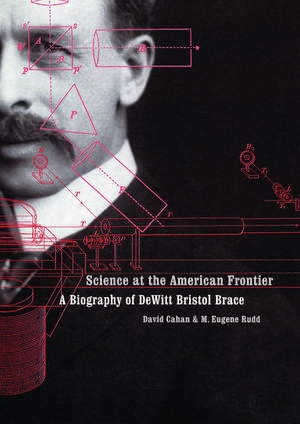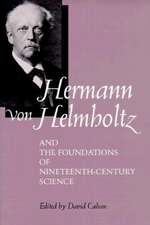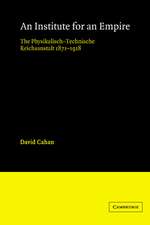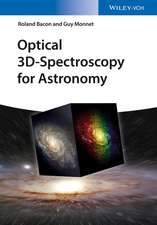Science at the American Frontier: A Biography of DeWitt Bristol Brace
Autor David Cahan, M. Eugene Rudden Limba Engleză Hardback – iun 2000
Preț: 457.35 lei
Nou
Puncte Express: 686
Preț estimativ în valută:
87.53€ • 91.04$ • 72.26£
87.53€ • 91.04$ • 72.26£
Carte tipărită la comandă
Livrare economică 14-28 aprilie
Preluare comenzi: 021 569.72.76
Specificații
ISBN-13: 9780803215085
ISBN-10: 0803215088
Pagini: 244
Ilustrații: Illus
Dimensiuni: 152 x 229 x 15 mm
Greutate: 0.48 kg
Ediția:New.
Editura: Nebraska
Colecția University of Nebraska Press
Locul publicării:United States
ISBN-10: 0803215088
Pagini: 244
Ilustrații: Illus
Dimensiuni: 152 x 229 x 15 mm
Greutate: 0.48 kg
Ediția:New.
Editura: Nebraska
Colecția University of Nebraska Press
Locul publicării:United States
Notă biografică
David Cahan is a professor of history at the University of Nebraska and the author of An Institute for an Empire. M. Eugene Rudd is a professor emeritus of physics and astronomy at the University of Nebraska. He is coauthor of Atomic Collisions: Heavy Particle Projectiles.
Recenzii
"The authors emphasize the transplantation of East Coast and European science, particularly physics, to the Great Plains by men like Brace, educated at Boston University, MIT, Johns Hopkins, and Berlin. In recounting the history of the department of physics, essentially Brace's creation, at the University of Nebraska, the authors illustrate the emergence of scientific community in the US between 1880 and 1905, the year of Brace's untimely death at age 46. Although physics had been taught at Nebraska from its earlier years, it was Brace, appointed in 1887, who created the curriculum. By 1895 he had established a small but important graduate research school, and by 1900 was recognized as a leader in US physics. He was internationally known as a gifted and innovative experimentalist whose measurements achieved remarkable precision. In his last 18 months of life he published six significant papers on the problem of ether drift. Recommended for general readers."—Choice











